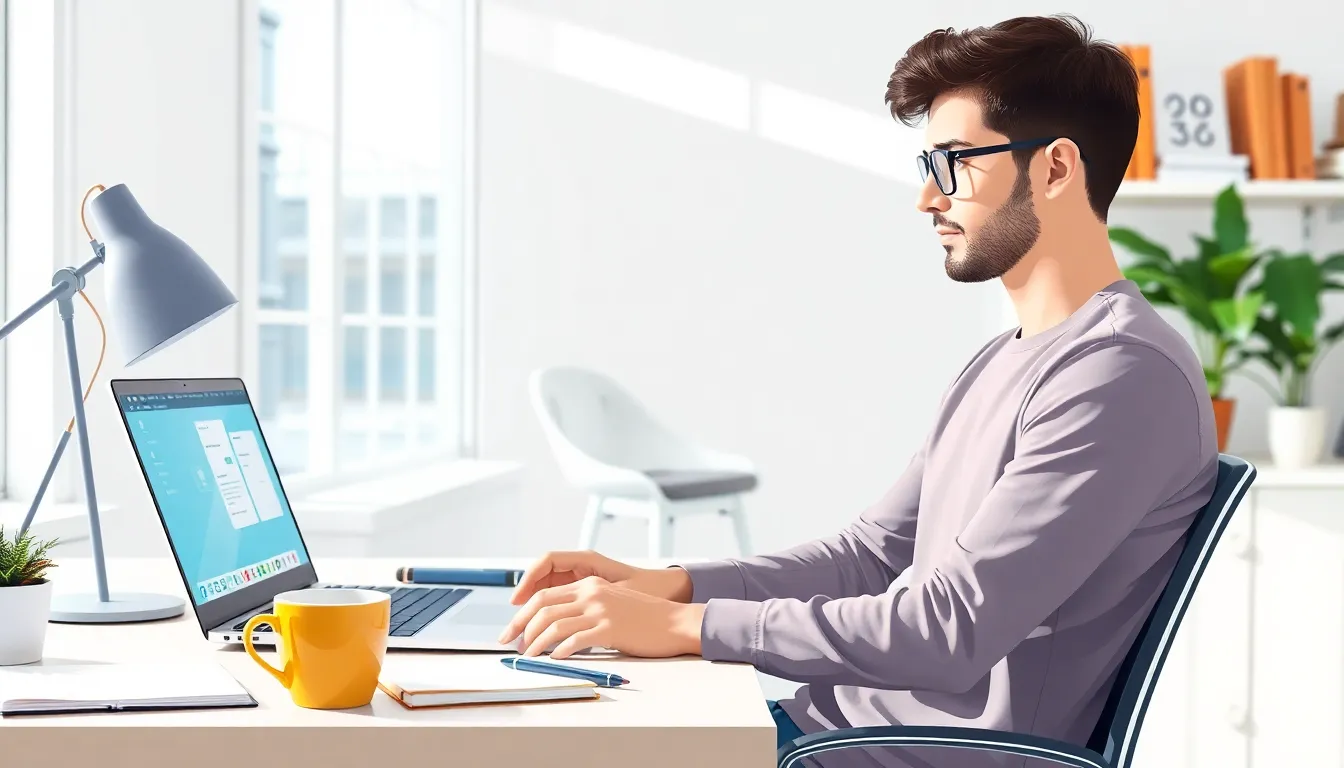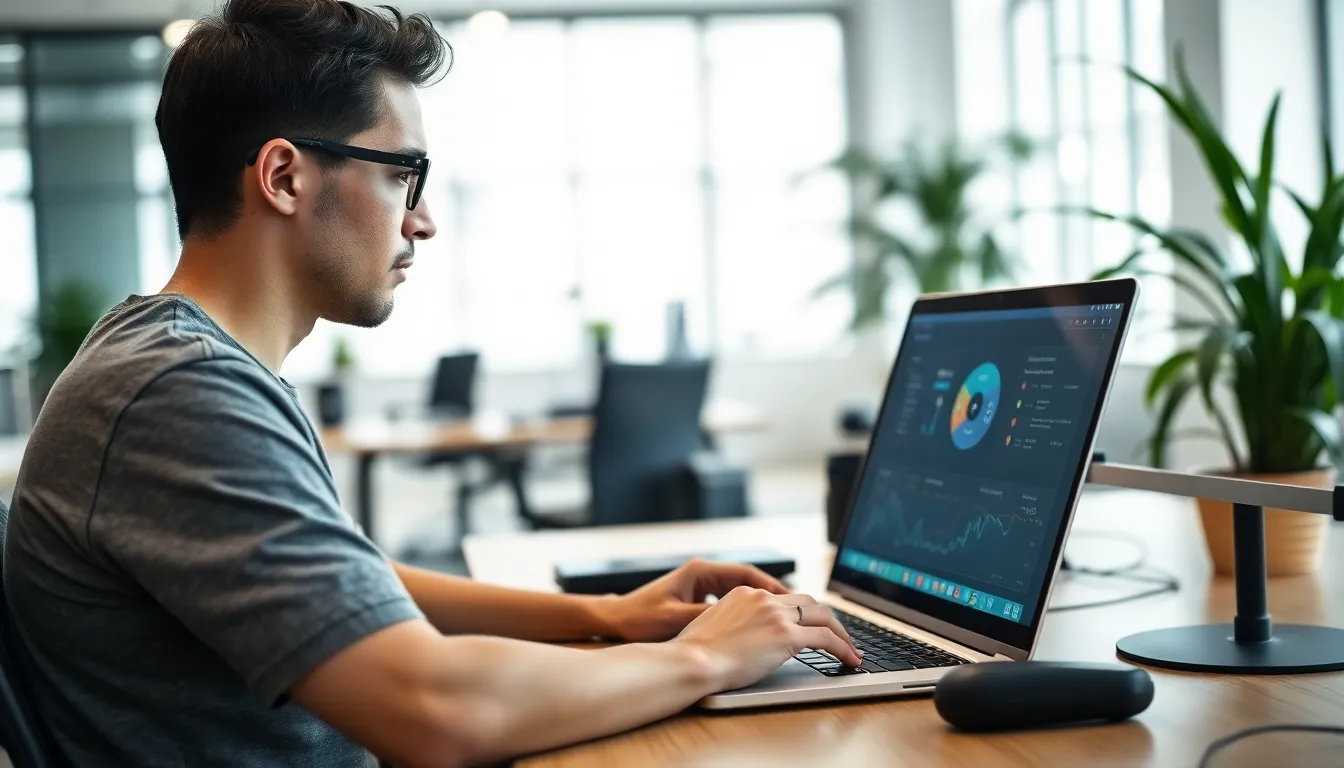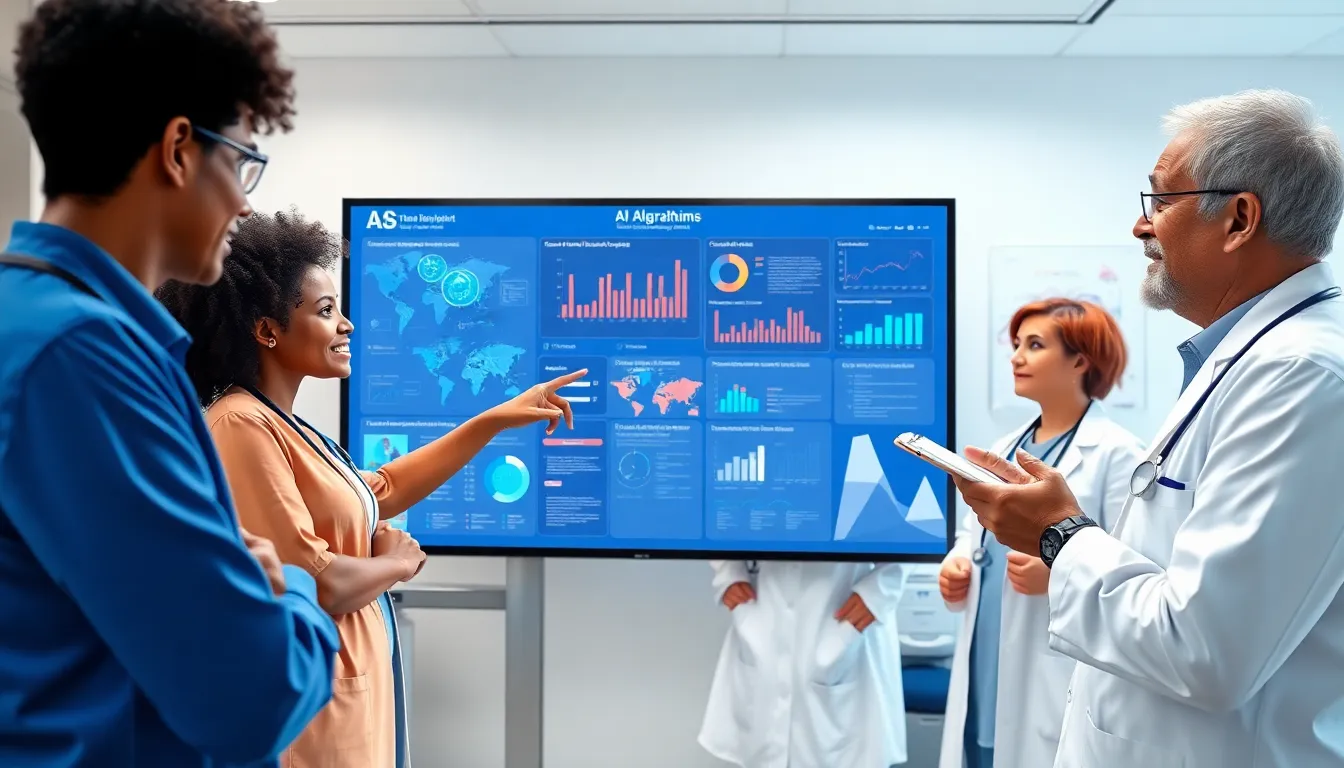In today’s fast-paced world, multitasking on a laptop isn’t just a skill; it’s a survival tactic. Whether it’s juggling spreadsheets, streaming cat videos, or keeping an eye on that never-ending email chain, the ability to switch gears seamlessly can make or break a workday. But let’s be real—nothing feels quite as heroic as managing to binge-watch an entire season of your favorite show while simultaneously finishing that report due yesterday.
Table of Contents
ToggleOverview of Laptop Multitasking
Laptop multitasking refers to the simultaneous execution of multiple applications and processes on a laptop. This capability boosts both efficiency and flexibility, enabling users to switch between tasks seamlessly.
Definition of Multitasking
Multitasking entails running more than one application or task at the same time. An example includes working on a document while checking emails. Users leverage this ability to enhance productivity and streamline workflows. Various operating systems support multitasking, allowing users to transition easily between programs, such as web browsers, word processors, or media players. Overall, effective multitasking depends on the device’s hardware specifications and the software’s ability to handle multiple requests promptly.
Importance in Modern Computing
In modern computing, multitasking plays a crucial role in efficiency. It enables users to handle diverse activities simultaneously, such as video conferencing and data analysis. Studies show that efficient multitasking can lead to a considerable increase in job performance and satisfaction. Additionally, multitasking allows individuals to adapt quickly to their workload, balancing work and leisure effectively. This flexibility means that professionals can meet tight deadlines while enjoying personal interests, like streaming content or browsing social media.
Benefits of Laptop Multitasking

Laptop multitasking significantly boosts work efficiency and user satisfaction. This capability allows simultaneous handling of different tasks, offering clear advantages in various situations.
Increased Productivity
Increased productivity stems from the ability to engage in multiple activities concurrently. For instance, professionals can edit documents while taking notes from an online presentation. Task-switching encourages a smoother transition between responsibilities, reducing downtime. Studies show that multitasking can enhance productivity by up to 40 percent, especially in fast-paced environments. Users frequently complete tasks faster while experiencing less stress, nurturing a sense of accomplishment as deadlines approach.
Enhanced Workflow
Enhanced workflow results from improved organization and task management. With multitasking, individuals can streamline their operations, accessing several applications without delayed loading times. A seamless flow between tasks minimizes disruptions, allowing for quick transitions from one project to another. Research indicates that effective multitaskers manage time better, leading to optimized results. Resources can be allocated more efficiently when team members collaborate on different tasks simultaneously, enabling them to meet shared objectives with ease.
Challenges of Laptop Multitasking
While laptop multitasking offers numerous advantages, it also presents significant challenges. These can hinder overall productivity and efficiency.
System Limitations
System limitations can significantly affect multitasking performance. Older hardware may struggle to run multiple applications simultaneously, leading to slowdowns. Insufficient RAM often results in lag when switching between tasks, making it frustrating for users. Even software compatibility issues can hinder effective multitasking, causing applications to crash unexpectedly. Additionally, certain operating systems may lack support for advanced multitasking features, limiting how users can operate. As a result, understanding the technical specifications is crucial for optimizing multitasking efforts.
User Distractions
User distractions play an essential role in limiting the effectiveness of laptop multitasking. Notifications from various applications can interrupt workflow, pulling attention away from priority tasks. Social media platforms often serve as significant distractions, easily tempting users to engage in unrelated activities. Moreover, having multiple windows open can create visual clutter, making it difficult to concentrate on essential duties. Regular breaks may help mitigate this issue, but such interruptions can still disrupt the flow of work. Recognizing personal triggers for distractions helps improve focus and fosters more effective multitasking strategies.
Best Practices for Effective Multitasking
Effective multitasking requires strategic organization and efficient tool use. Implementing best practices enhances productivity and prevents overwhelm.
Organizing Applications
Creating an organized workspace fosters better multitasking. Group similar applications, such as productivity tools and communication platforms, in dedicated folders or tabs. Customizing desktop layouts can highlight frequently used applications, minimizing the time spent searching. Size matters; small windows can help users maintain visibility on multiple tasks. Utilizing virtual desktops separates workspaces, such as projects, meetings, or browsing, easily switching between them when needed. Also, closing unused applications reduces clutter and focuses attention on priorities.
Utilizing Shortcuts
Keyboard shortcuts significantly streamline multitasking. Mastering common commands, like copy (Ctrl+C) and paste (Ctrl+V), can save time during data entry or content creation. Utilizing operating system shortcuts, such as switching between applications (Alt+Tab) or opening task managers (Ctrl+Shift+Esc), boosts efficiency. For browsers, shortcuts help manage tabs quickly, such as jumping to the next tab (Ctrl+Tab). Familiarizing oneself with customizable shortcuts allows enhancement and personalization based on preferences. Regular practice with these tools elevates multitasking proficiency and reduces cognitive load.
Mastering laptop multitasking is essential for anyone looking to enhance productivity in today’s demanding work environment. By effectively balancing work and leisure activities users can achieve a seamless workflow that maximizes efficiency. The right strategies and tools can transform how tasks are approached allowing for smoother transitions between applications and better time management.
While challenges like system limitations and distractions exist recognizing these issues and implementing best practices can lead to significant improvements. With a well-organized workspace and a focus on minimizing interruptions multitasking can become a powerful ally in achieving professional and personal goals. Embracing these techniques not only boosts productivity but also enhances overall satisfaction in daily tasks.





